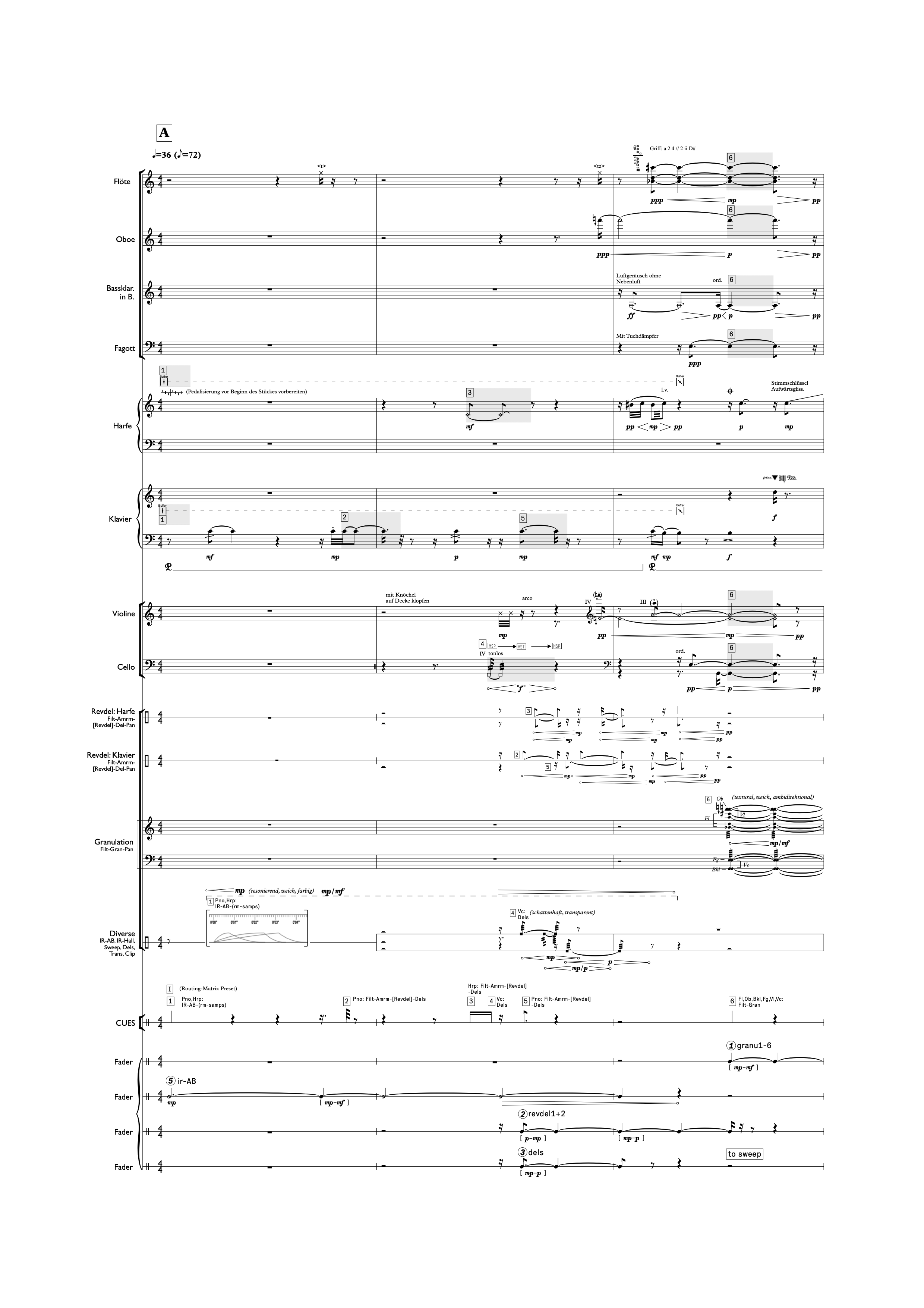Souvenance
The composition’s departure point was a reflection on the process of remembering. Remembrance is a very psychologically influenced process: depending on the emotional scope and current life situation, our memories change in perception.
| Title | Souvenance |
| Subtitle | for eight players and live-electronics |
| Year | 2017 |
| Instrumentation | Ensemble and electronics |
| Duration | 7'00'' |
| Short Technical Description | fl, ob, bcl, fg, hrp, pno, vl, vc, director. live-electronic interpreter, cue-launcher, sound engineer. 2 channel sound system: computer, interface, controllers, mics, mixer. |
| Premiere | 2018, February 18th |
| Premiere Details | ensemble proton bern, Dampfzentrale, Bern, Switzerland |
We also memorise how we remember something. To make up for memory gaps and give us a sense of completeness, inaccuracies and errors are built-in. In this respect, the simple act of remembering something is already enough to distort our memory. But also, personal changes sometimes radically change the perspective on the experience. What appears static and factual from a distance reveals itself as very dynamic in our experience.
The examination of these matters has been reflected structurally, among other things, in the use of different canon structures. There is a layer of traditional canon structures, where pitches and rhythms of one voice will be repeated in another voice after a certain duration. This applies in particular to the two main parts: the piano and, as a pitch inversion, the harp. In other layers, only the staggered entries are adopted from the canon principle. The duration and rhythm of the events remain free, but noises are set where they occur. Layered several times, they result in a potential for complex constellations, which can be sounded out and sensed compositionally as «Strukturklänge», so to speak. The result is free-flowing music that drifts along in an almost somnambulistic manner and yet always articulates the here and now.
In 2023 the Ensemble Arc-en-Ciel played Souvenance under the direction of Jonathan Stockhammer. This beautifully played concert was then recorded by Moritz Werner published on by the SRG
While on the one hand the electronics are also used quite consciously for this sensual aspect of composing that intervenes in the individual constellations, they, just like the instrumental parts, fall back on the basic concept of the work: the change of an element over time. This is done through the use of granular synthesis, impulse responses, and ring modulation with delay structures. Although the electronics are also used quite consciously for this sensual aspect of composing, which intervenes in the individual constellations. Overall, however, the live electronics play a structural role in both the temporal and harmonic aspects of the composition and embrace the entire composition as a meta-instrument whose expressive possibilities are defined by impulse responses, ring modulation, delay structures and granular synthesis.
Besides the use as reverb and a few sound-oriented individual passages, there are two types of impulse responses in Souvenance: harmonic ones with slow envelopes and noisy ones generated from noise with rather short envelopes. The spectra of the harmonic impulse responses are related to the pitches relevant to the canon structures: following the calculation basis of ring modulation, the partials of these responses were calculated individually using (a selection of partials of) the pitches relevant to the canon (‘input signal’) and the fundamental frequency of another harmonic pitch layer (‘carrier signal’) and layered as an additive synthesis to form the respective spectra, to which an amplitude envelope was then applied.
The same hidden harmonic layer that is used as the ‘carrier signal’ in the (ring modulation-based) calculation of the partials for the harmonic impulse responses also corresponds to the frequency of the ‘actual’ carrier signal in the case of ring modulations in live electronics (ring modulated instrumental signals). Here, the ring-modulated sounds are rendered as reversed delays or simple delays. But here, too, the partials resulting from the ring modulation were calculated and harmonic fields were created from them, which are played by the instruments (partials of the ring modulation as tones for the instruments). These fields have their own temporality, are not conducted as a canon, but are created to a certain extent from the harmonic relationships of the canon. Mostly, rather long, cloud-like harmonic fields are created. In the sense of the temporal transformation process, they are almost always continued as granulated resonant sound (granular synthesis) and take on a structural role in the work through their strong expression.
